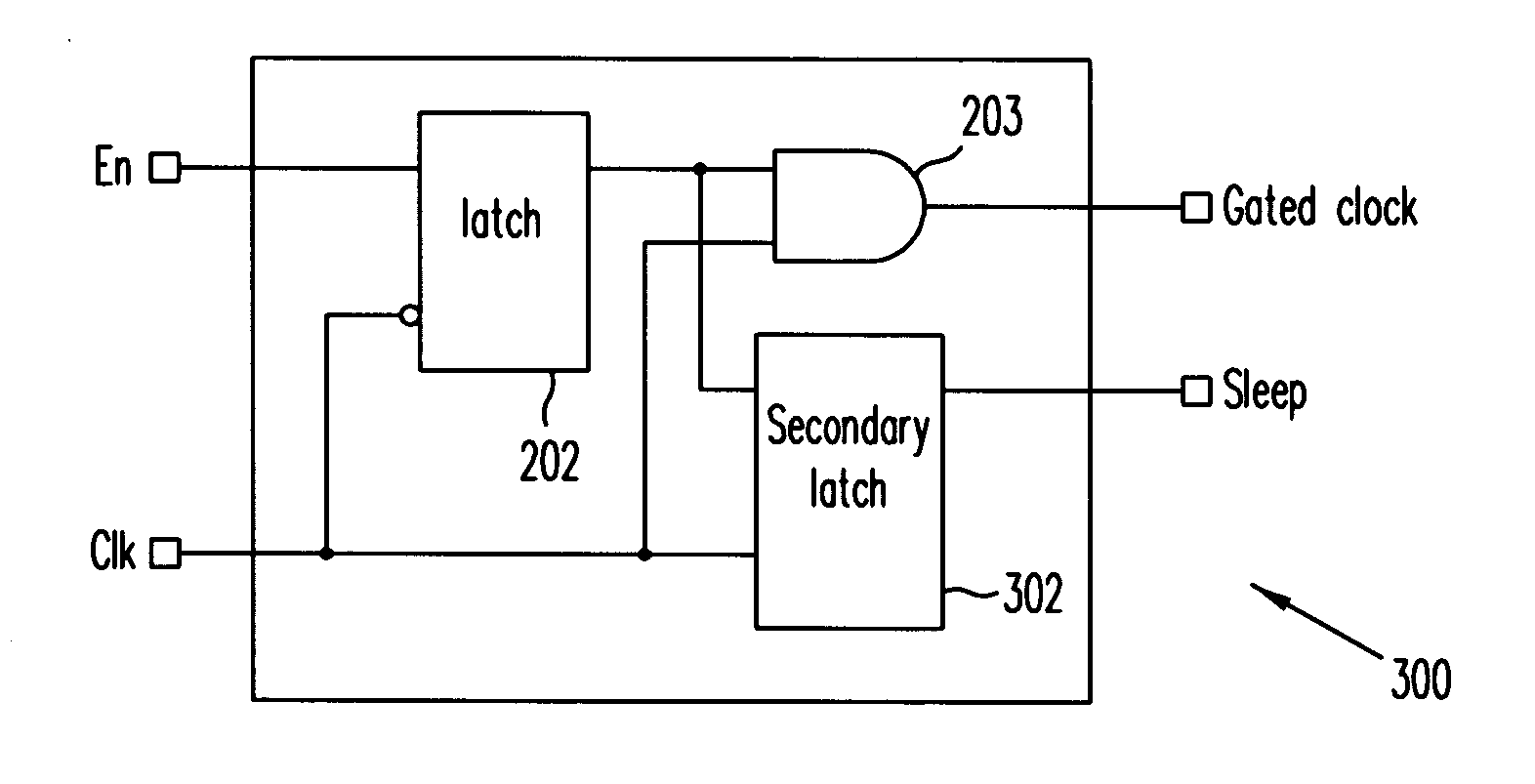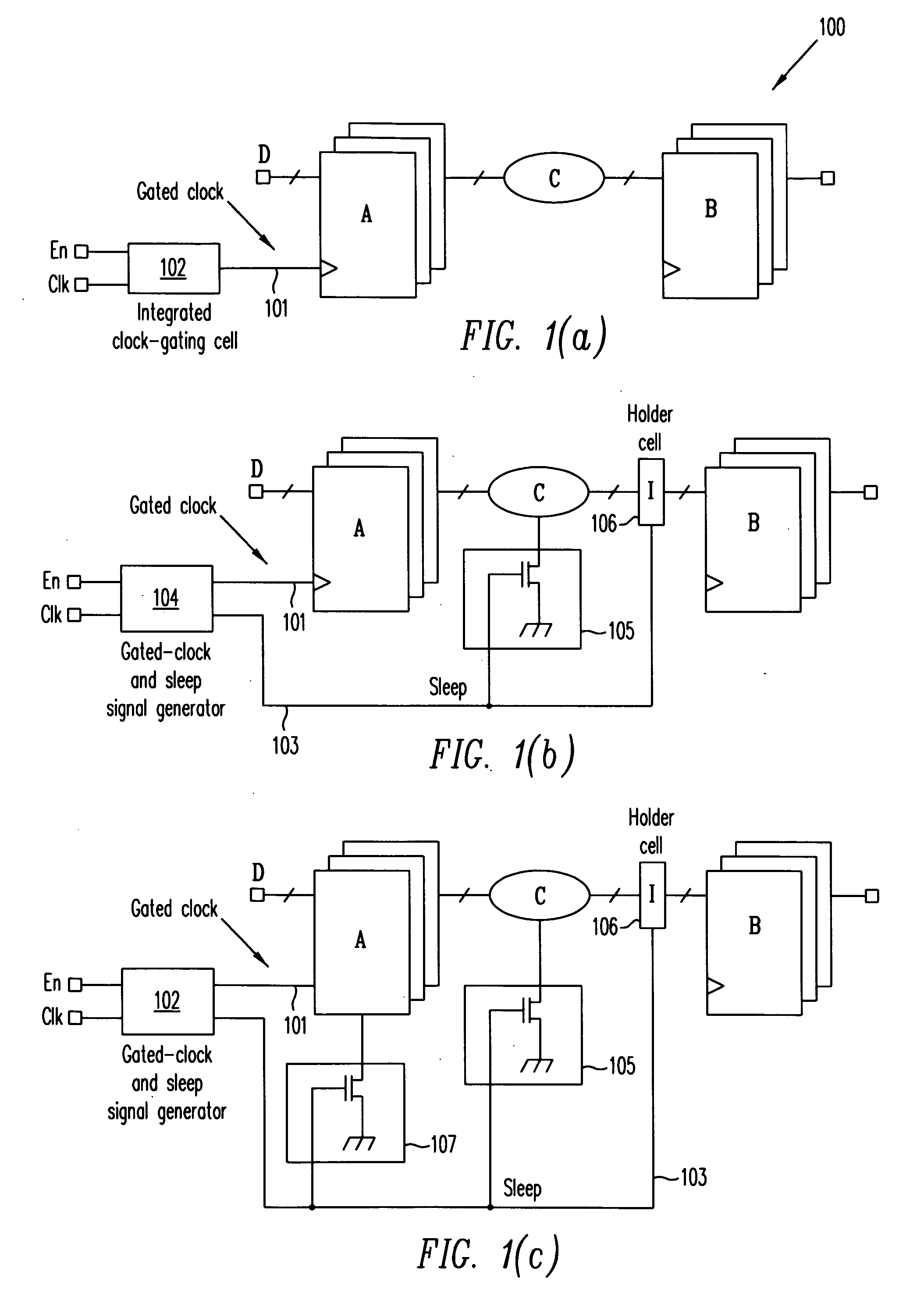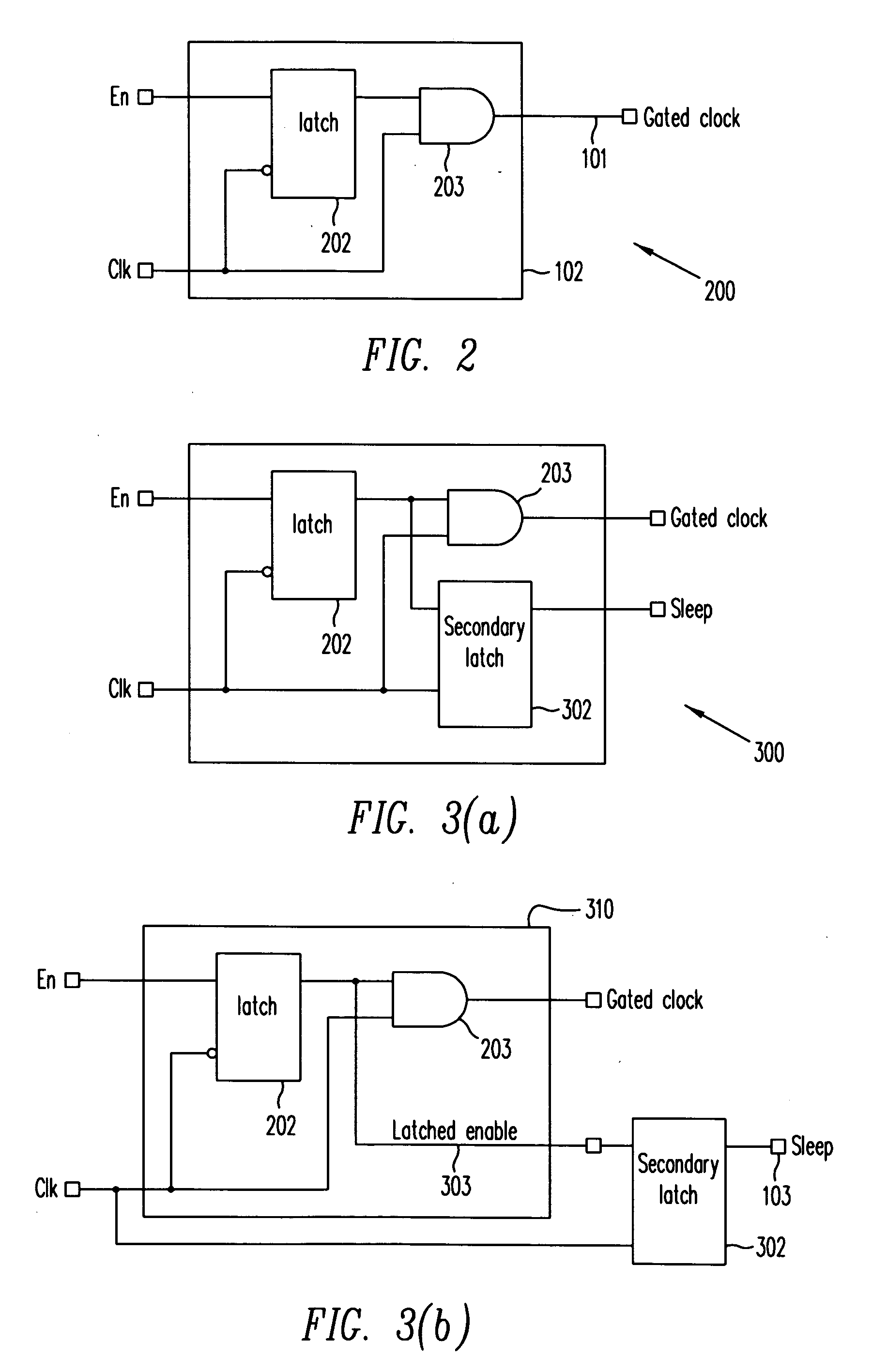Automatic extension of clock gating technique to fine-grained power gating
- Summary
- Abstract
- Description
- Claims
- Application Information
AI Technical Summary
Benefits of technology
Problems solved by technology
Method used
Image
Examples
Embodiment Construction
[0022] Clock-gating is a technique that reduces clock power dissipation. FIG. 1(a) illustrates clock-gated circuit 100 schematically. As shown in FIG. 1(a), register set A receives a clock signal 101 that results from gating clock signal “clk” with enable signal, “En” in an “integrated clock-gating cell”102. The power dissipated by circuit propagating clock signal “clk” is termed “dynamic power dissipation.” Clearly, by disabling propagation of clock signal “clk”, dynamic power dissipation in the circuits clocked by clock signal “clk” and its derivative signals is reduced. FIG. 2 shows structure 200, which is an example of an integrated clock-gating (ICG) cell. As shown in FIG. 2, gated-clock signal 102 is provided by gating clock signal “clk” with the output signal of latch 202 in AND gate 203. Latch 202 may be implemented, for example, by a level-sensitive latch that transfers the logic value of enable signal “En” during the low logic level of clock signal “clk”.
[0023] The invent...
PUM
 Login to View More
Login to View More Abstract
Description
Claims
Application Information
 Login to View More
Login to View More - R&D
- Intellectual Property
- Life Sciences
- Materials
- Tech Scout
- Unparalleled Data Quality
- Higher Quality Content
- 60% Fewer Hallucinations
Browse by: Latest US Patents, China's latest patents, Technical Efficacy Thesaurus, Application Domain, Technology Topic, Popular Technical Reports.
© 2025 PatSnap. All rights reserved.Legal|Privacy policy|Modern Slavery Act Transparency Statement|Sitemap|About US| Contact US: help@patsnap.com



